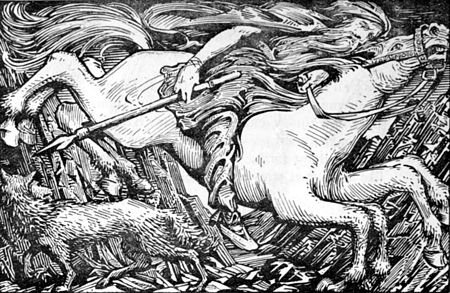Polydactyl
poly = multiple dactyl = finger
Julius Ceasar's horse with multiple toes
An eight footed equine
Mark Sittich von Hohenems, Prince-Archbishop of Salzburg (1574-1619)
The horse had been obtained in Arabia, each of its alleged eight feet possessed its own horseshoe in the painting, and the painting itself is on public display at the Palace Helbrunn (now a museum), situated between Salzburg and Untersberg, Austria.
Odin Rides to Hell on Sleipnir, an 8 legged horse.
Yes, it happens to people too!











